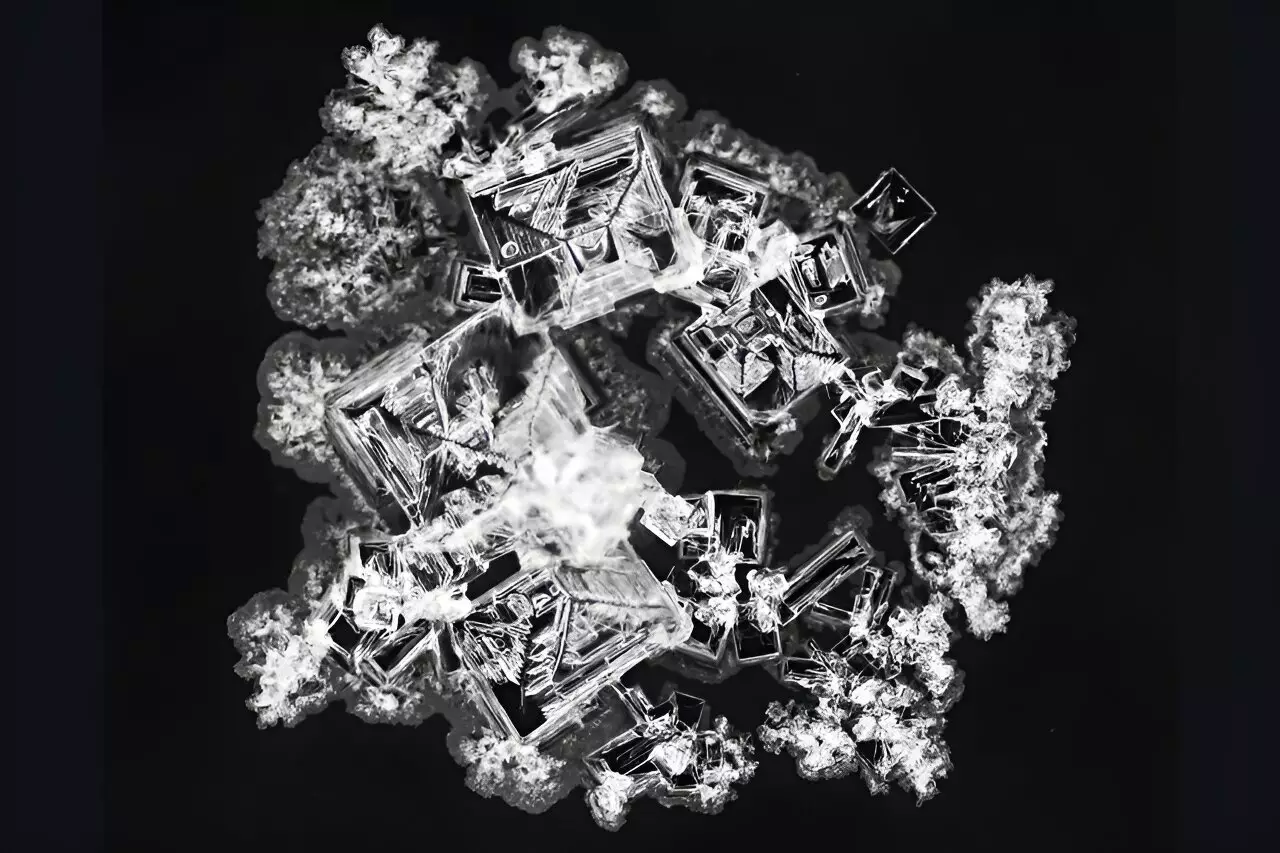Imagine peering at a seemingly mundane drop of dried salt solution, yet discovering an unexpected world of intricate patterns that resemble the finest abstract art. This intriguing phenomenon has captured the attention of chemists at Florida State University (FSU), where a new study reveals that these unique dried salt stains can be leveraged to enhance machine learning algorithms for identifying various salts. The research, recently published in the esteemed Proceedings of the National Academy of Sciences, challenges conventional chemical analysis methods and opens doors to innovative applications across multiple fields.
Professor Oliver Steinbock, a leading voice in this groundbreaking work, describes the process of capturing the “chemical fingerprints” of different salts. With common table salt (sodium chloride) providing a familiar point of reference, the study notes how each sample possesses distinctive characteristics. Scientifically, the objective was clear: if a dried salt solution can manifest a variety of intricate patterns during evaporation, could those patterns act as reliable indicators of the salt’s identity?
Innovative Methodology: From Patterns to Predictions
The research team took an inventive approach by recording 7,500 images across 42 distinct salt samples, creating a comprehensive database aimed at training their algorithm. Using advanced software, they distilled each image into 16 quantifiable parameters that characterize features such as deposit area, crystal arrangement, and texture. These parameters are pivotal, as they allow machine learning models to translate visual elements into numerical data that can be systematically analyzed.
Each pattern emerges as a blend of myriad forces—fluid dynamics, environmental conditions, and crystal morphology—creating a complex interplay that researchers can harness. Notably, the study’s algorithms successfully predicted the chemical composition of unknown samples with an impressive accuracy rate of 90%, showcasing the astounding capabilities of computational analysis in deciphering subtle visual cues. This achievement poses an essential question: how can such an innovative approach revolutionize traditional methods of chemical identification?
Potential Impact: From Laboratories to Space Exploration
The implications of this work stretch far beyond academic interest. The capacity to derive chemical insight from photographic analysis has potential applications that could disrupt various sectors. One particularly exciting prospect lies in space exploration; outfitting a rover with advanced chemical labs is often financially and logistically burdensome. However, utilizing a simple camera paired with sophisticated algorithms could provide a lightweight alternative for understanding extraterrestrial materials.
In addition to space, applications such as drug screening, and material safety testing could greatly benefit from this technique. In situations where time is critical, the ability to rapidly identify the chemical composition from mere milligrams of material offers a game-changing advantage. For example, healthcare settings lacking immediate access to laboratory facilities could employ this method for basic blood analyses or to identify potential contaminants.
The Quest for Continuous Innovation
As the team works to enhance their machine learning tool and expand their dataset, they aim to address current limitations by exploring hundreds of thousands of additional images. The ongoing evolution of their research emphasizes the importance of lab automation; hence, they are currently testing a robotic drop imager in Steinbock’s lab to enhance data collection processes. This automation is integral, as it dramatically improves the efficiency and accuracy of chemical analyses when compared to human efforts.
Steinbock emphasizes a critical distinction: while human interpretation of a large dataset can become confusing, machine learning systems excel with increased exposure to data. The more images the algorithms process, the more adept they become at making precise identifications based on patterns that are often indiscernible to the human eye.
Shifting the Paradigm of Chemical Analysis
The research conducted at FSU not only underscores the power of advanced computational methods in the field of chemistry but also serves as a reminder of the vast potential hidden within the seemingly ordinary. It forces us to consider how everyday phenomena might be repurposed to catalyze scientific discovery. The integration of aesthetic observation—viewing dried salt patterns as visual data—epitomizes a moment where art meets science, transforming our understanding of both disciplines.
As strides continue to be made in this field, the combination of creativity, technology, and chemistry holds an enticing promise. Perhaps what began as an exploration of salt stains may ultimately redefine how we approach chemical identification in the future, suggesting that even the simplest elements of nature can reveal profound insights when viewed through a pioneering lens.


Leave a Reply